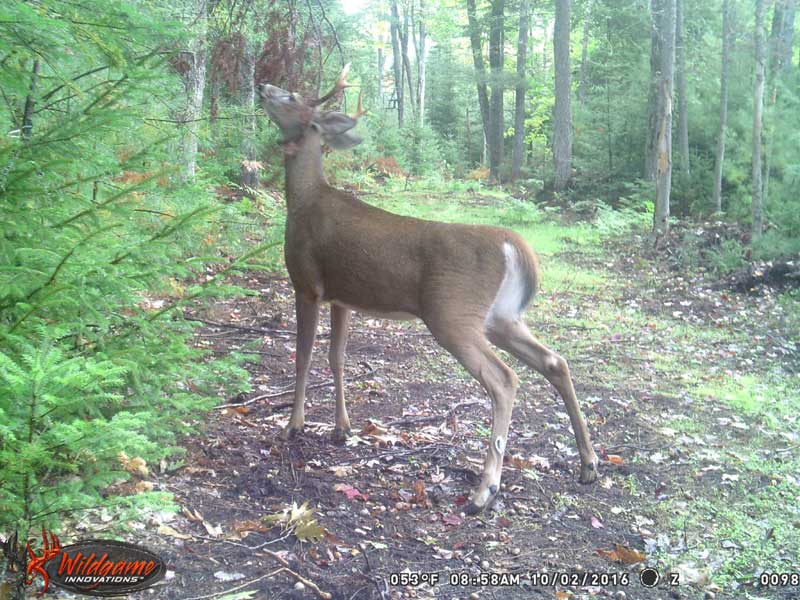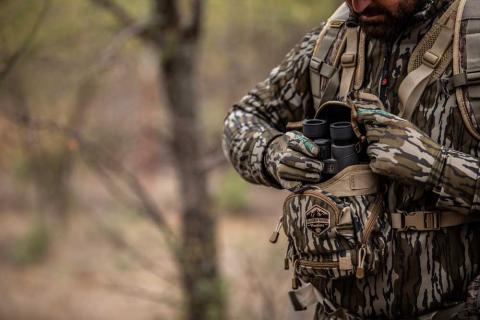Bob Humphrey
This subtle, often underrated object might just be one of the most important keys to honing in on deer movements.

One of the benefits to being a bowhunter is that you tend to have more opportunities to watch natural, undisturbed deer behavior. I was hunting over a scrape one afternoon when a decent buck - tempting, but too small for early in the season - appeared and slowly made his way to the scrape. First, he lifted his nose, and carefully inspected each twig of the overhanging limb. Then he worked his headgear through it, intently but not aggressively. Finally, he gave it one more nasal inspection before sauntering off. The buck spent several minutes standing in the scrape but never pawed the ground or urinated in it. Nonetheless, it had served its purpose.
Most deer hunters can easily recognize a scrape - a bare patch of earth created when a buck scratched away the overlying leaves and duff. Some fail to recognize another component. Above every scrape, or at least the ones that have a likelihood of being re-visited, is an overhanging branch that is at least as important and may be more important than the scrape itself in terms of olfactory communication, and possibly hunting.
While the act and purpose of scrape making is not completely understood, we can speculate based on what we know about deer. Some scrapes are little more than pawed earth that could have been created as a show of aggression when two rival bucks crossed paths. It’s unlikely it will ever be re-visited. More often, scrapes are used as a sort of billboard conveying some sort of olfactory message.
When a buck makes a scrape, it first paws the ground, clearing away litter to expose bare earth. It then urinates in the scrape, sometimes directly, other times rubbing its tarsal glands together and letting the urine run down its legs into the scrape. We don’t know exactly what message the scrape-making buck is trying to convey. He may be signaling dominance to other bucks, or alerting does to his readiness to breed, possibly both. The does may not hang around and wait for the buck, or seek him out, but it is suspected the aroma may trigger physiological changes in the doe that help trigger her estrus cycle, along with diminishing day length.

As I observed in the opening passage, the buck does something else when he makes, and re-visits the scrape. He smells, rubs and may even lick the overhanging branch. So do other deer, even does. While the other deer may not urinate in the scrape, they’re all leaving behind scent messages from their forehead and infraorbital glands. And while scraping typically occurs in the fall, deer are more likely to use the licking branch year round. That, in and of itself makes that branch perhaps more important than the scrape. It’s a communal spot - like the local newsstand - that individuals in the local population visit regularly to share information.
In a classic Michigan study, Dr. John Ozoga discovered that bucks could actually be induced to create scrapes at a specific location merely by providing an appropriate licking branch, overhanging an open area roughly 4-5 feet above the ground. That can be a game changer for the deer hunter.
Hunting over natural scrapes can be effective, provided they’re in a favorable location. But they may be in thick cover, not near any climbable trees or where prevailing winds are wrong. By making a licking branch to entice scraping, or building a mock scrape, sometimes you can get the deer to go where you want them to. Just the branch might be enough for a mock scrape but you can hedge your bets by establishing it in an area where deer regularly travel and adding some scent. Then let nature take its course.
Bob Humphrey is a certified wildlife biologist and registered Maine guide who has worked with and hunted deer across North America. See more of his writings at www.bobhumphrey.com.




























